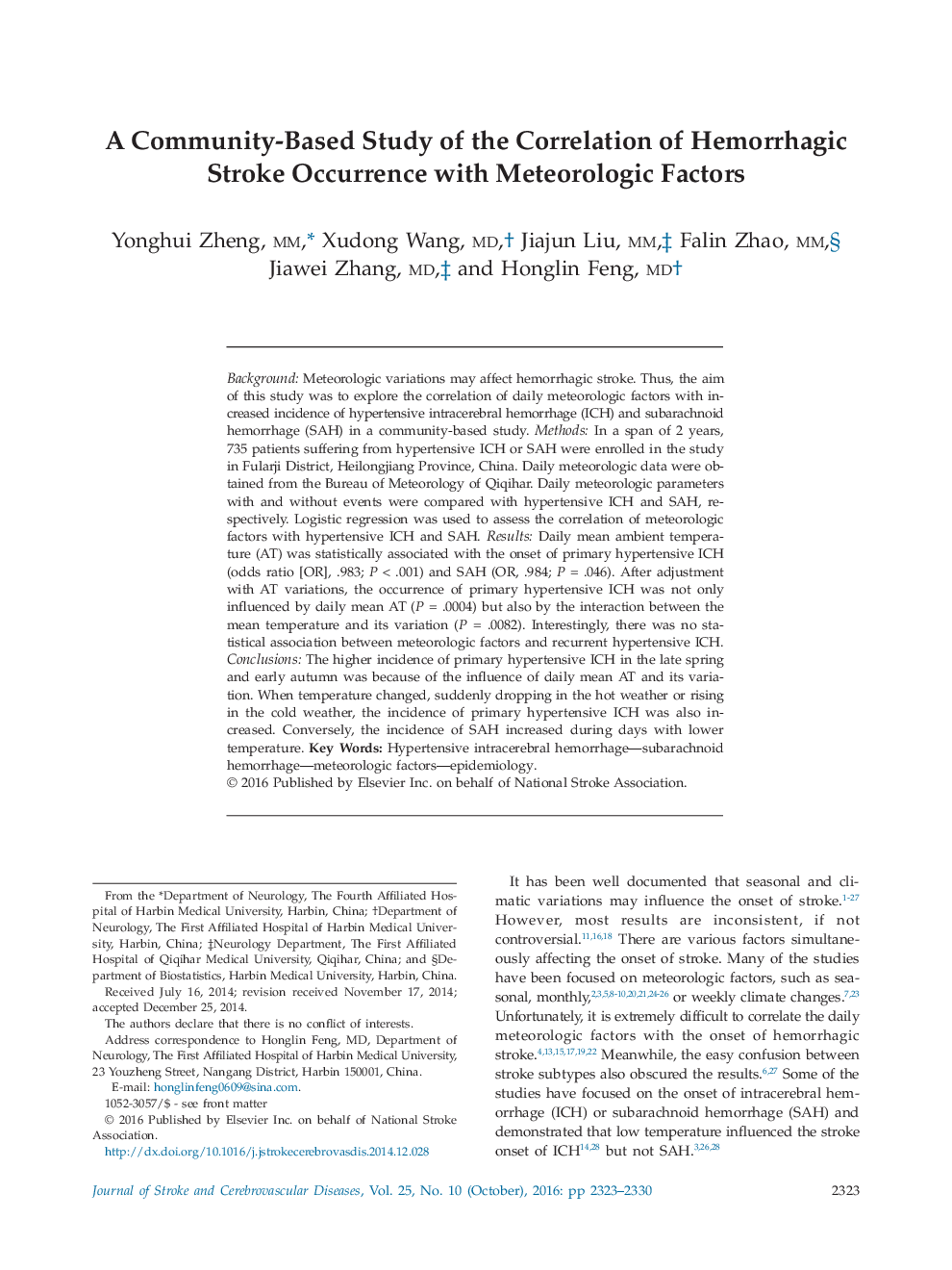| Article ID | Journal | Published Year | Pages | File Type |
|---|---|---|---|---|
| 2702101 | Journal of Stroke and Cerebrovascular Diseases | 2016 | 8 Pages |
BackgroundMeteorologic variations may affect hemorrhagic stroke. Thus, the aim of this study was to explore the correlation of daily meteorologic factors with increased incidence of hypertensive intracerebral hemorrhage (ICH) and subarachnoid hemorrhage (SAH) in a community-based study.MethodsIn a span of 2 years, 735 patients suffering from hypertensive ICH or SAH were enrolled in the study in Fularji District, Heilongjiang Province, China. Daily meteorologic data were obtained from the Bureau of Meteorology of Qiqihar. Daily meteorologic parameters with and without events were compared with hypertensive ICH and SAH, respectively. Logistic regression was used to assess the correlation of meteorologic factors with hypertensive ICH and SAH.ResultsDaily mean ambient temperature (AT) was statistically associated with the onset of primary hypertensive ICH (odds ratio [OR], .983; P < .001) and SAH (OR, .984; P = .046). After adjustment with AT variations, the occurrence of primary hypertensive ICH was not only influenced by daily mean AT (P = .0004) but also by the interaction between the mean temperature and its variation (P = .0082). Interestingly, there was no statistical association between meteorologic factors and recurrent hypertensive ICH.ConclusionsThe higher incidence of primary hypertensive ICH in the late spring and early autumn was because of the influence of daily mean AT and its variation. When temperature changed, suddenly dropping in the hot weather or rising in the cold weather, the incidence of primary hypertensive ICH was also increased. Conversely, the incidence of SAH increased during days with lower temperature.
